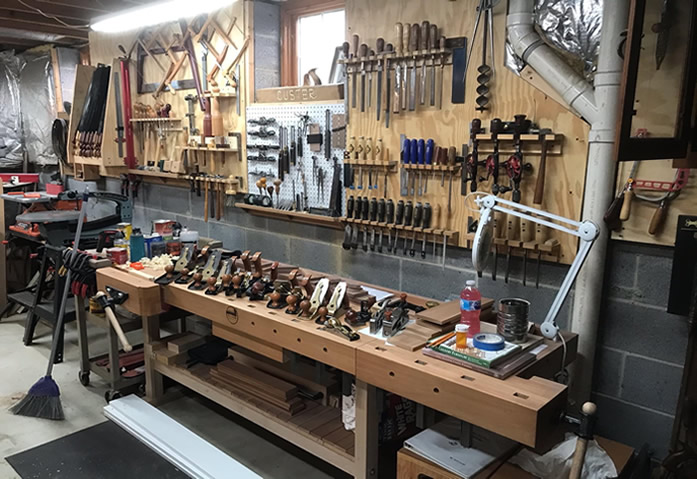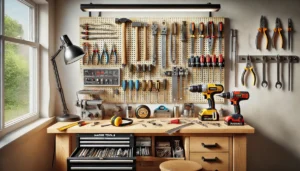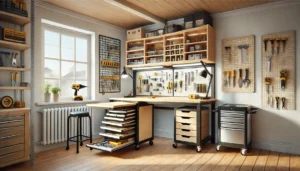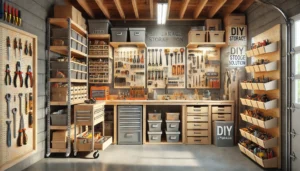
In the modern age of DIY projects and at-home craftsmanship, having a small workshop can be both a blessing and a challenge. While a dedicated space for your tools and projects is invaluable, working within the confines of a small area requires strategic organization to maximize efficiency and productivity. In this article, we’ll explore various tips and techniques to help you make the most of your small workshop, ensuring it remains tidy, functional, and conducive to creativity.
Maximizing Vertical Space
One of the most effective ways to optimize a small workshop is to utilize vertical space. This involves installing shelves, pegboards, and hooks on your walls to store tools and materials that would otherwise take up valuable bench or floor space.
Shelving:
Invest in sturdy wall-mounted shelves to hold larger items like power tools, boxes of nails, screws, and other hardware.
Adjustable shelving can be particularly beneficial, allowing you to reconfigure the storage space as your needs change.
Pegboards:
Pegboards are an excellent solution for keeping frequently used tools within easy reach.
Customize your pegboard layout to suit your workflow, ensuring that all your essential tools have a designated spot.
Hooks and Racks:
Use hooks to hang items like hammers, wrenches, and other tools with handles.
Magnetic strips can also be a great addition for holding metal tools securely.
Portable Storage Solutions
For a small workshop, mobility is key. Portable storage solutions enable you to move your tools and materials around as needed, creating a flexible workspace that can adapt to different projects.
Tool Carts:
A rolling tool cart can be a game-changer. It allows you to keep your most-used tools at hand while also being able to move them out of the way when necessary.
Look for tool carts with multiple drawers and compartments to keep everything organized.
Storage Bins:
Clear plastic bins with lids are perfect for storing smaller items like screws, nails, and other hardware.
Label each bin clearly to make finding items easier and faster.
Rolling Workbenches:
A workbench with wheels can be easily repositioned to create more space when needed.
Some models come with built-in storage options, providing a dual-purpose solution.
Efficient Layout and Workflow
The layout of your workshop plays a crucial role in how efficiently you can work. A well-organized workshop layout minimizes unnecessary movement and makes it easier to find and access tools and materials.
Work Zones:
Divide your workshop into different zones based on the type of work you do. For example, have a designated area for cutting, another for assembly, and another for finishing.
Ensure each zone has the necessary tools and materials within arm’s reach.
Work Triangle:
Similar to a kitchen work triangle, consider the positioning of your main work areas (cutting, assembly, finishing) to minimize walking distances.
Keep the most frequently used tools and materials within easy reach to reduce the time spent searching for items.
Lighting:
Good lighting is essential in any workshop. Ensure your work areas are well-lit to prevent eye strain and improve precision.
Consider installing task lighting over specific work areas for additional illumination.
Decluttering and Maintenance
A cluttered workshop can quickly become a hindrance to productivity. Regularly decluttering and maintaining your workspace is crucial to keeping it functional.
Regular Cleanups:
Set aside time at the end of each work session to clean up your workspace. Put tools back in their designated spots, sweep the floor, and organize materials.
A clean and tidy workshop not only looks better but also reduces the risk of accidents.
Tool Maintenance:
Keep your tools in good working condition by performing regular maintenance. This includes cleaning, sharpening, and lubricating them as needed.
Well-maintained tools are more efficient and safer to use.
Decluttering:
Periodically go through your tools and materials to identify items you no longer need or use. Donate, sell, or dispose of these items to free up space.
Adopting a minimalist approach to your workshop can help you focus on what’s truly important.
Personalizing Your Space
Finally, don’t forget to add personal touches to your workshop to make it a space you enjoy spending time in. This can include decorating with posters, adding a comfortable chair, or setting up a sound system for music.
Decorations:
Add motivational posters or artwork to your walls to inspire creativity.
Personalize your pegboard with colors or designs that reflect your style.
Comfort:
Invest in a comfortable chair or stool for those long hours spent working on projects.
Ensure your workspace is ergonomically designed to reduce strain and fatigue.
Entertainment:
Set up a small sound system or speakers to listen to music, podcasts, or audiobooks while you work.
Having entertainment can make the time spent in your workshop more enjoyable and productive.
Optimizing a small workshop requires creativity and strategic organization. By maximizing vertical space, utilizing portable storage solutions, creating an efficient layout, maintaining a clutter-free environment, and adding personal touches, you can transform your small workshop into a highly functional and enjoyable workspace. Remember, the goal is to create a space that not only accommodates your tools and projects but also inspires you to create and build with ease.



